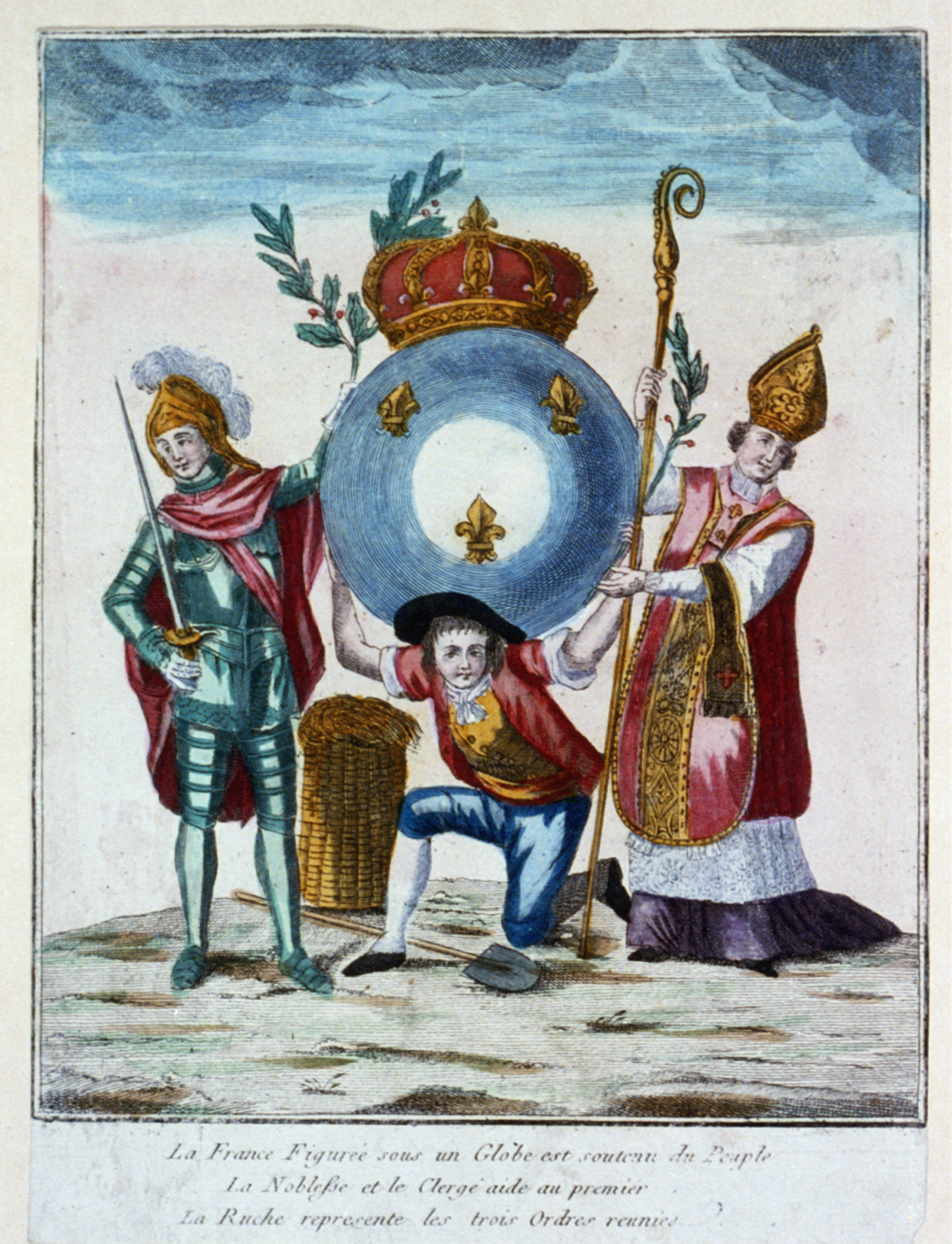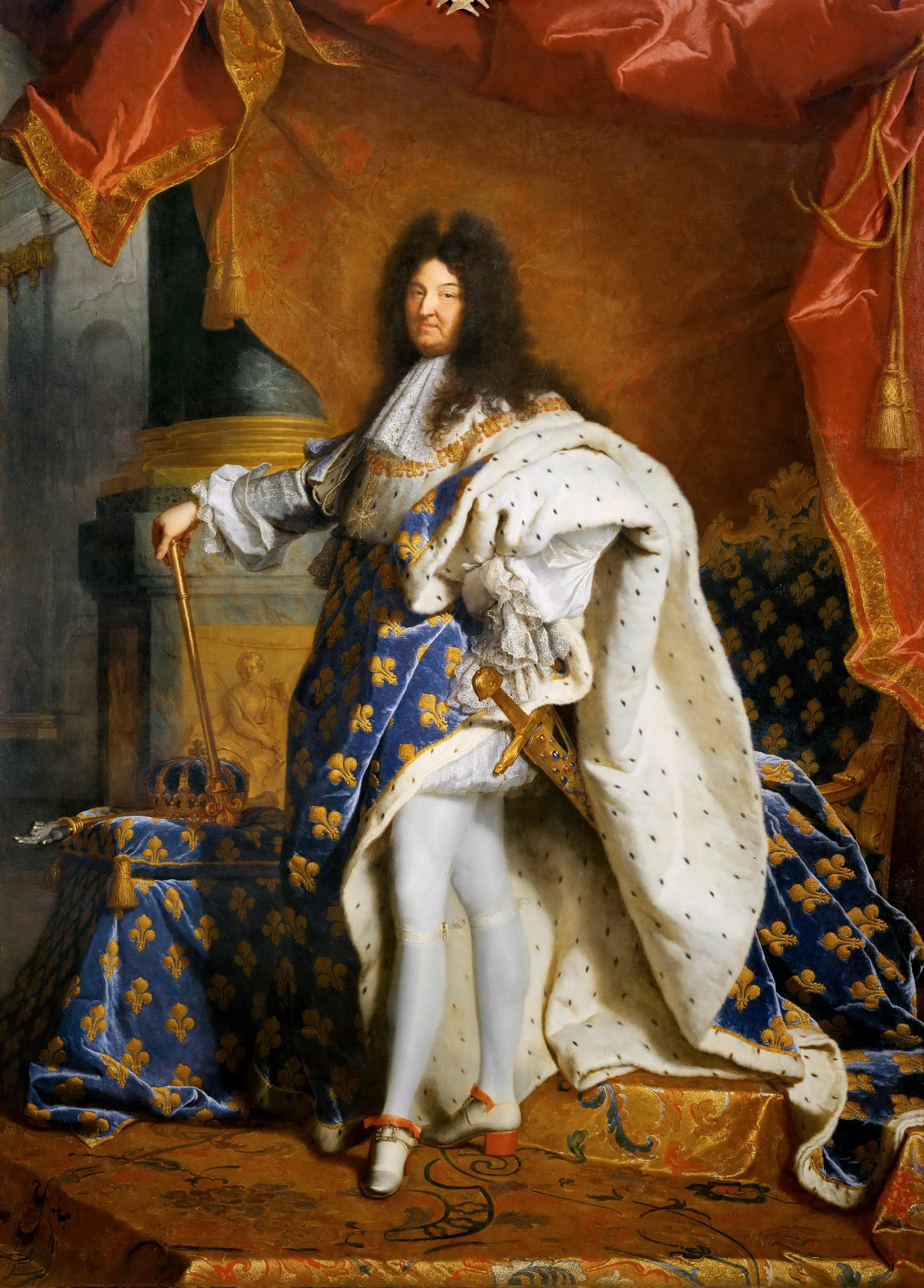- Compare the paintings "The Oath of the Horatii" and "School of Athens" both in relation to their artistic schools and their themes.
- Differentiate the reasons why themes of antiquity are revisited by the French in this historical moment.
- Relate how the story expressed in the painting reflects the historical moment in which it was painted.
In the 18th century, the cultural movement of the Enlightenment emerged in Europe, leading to increased questioning of absolutist power, the excesses of the court, and the influence of the church on political and economic decisions. In France, the economic situation was critical: in addition to deep social inequality, the state faced high public debt and an agricultural crisis.
The fervor of Enlightenment ideas, along with the economic, social, and political context, led to a decline in the popularity of Rococo—an artistic style associated with the elites—and paved the way for Neoclassicism, which revived Renaissance ideas that, in turn, drew from classical antiquity, including the political perspective of that period. David is considered one of the most important Neoclassical painters, and the painting "The Oath of the Horatii" marks an important transition in his art towards Neoclassicism.
- Static bodies, resembling sculptures.
- Rigorous application of human anatomy.
- Linear perspective.
- Mathematical symmetry through forms, rhythms, and colors.
- Themes that refer to the Greco-Roman universe.
- Well-defined lines.
- A dramatic and emotional foundation, with traces of theatricality.
The painting “The Oath of the Horatii” depicts an episode from the founding of Ancient Rome. According to legend, there was a war between Rome and Alba Longa. To avoid further bloodshed, it was decided that the conflict would be resolved through a deadly duel between the Horatii, three Roman brothers, and the Curiatii, brothers from Alba Longa. The families, however, were close, and one of the Roman sisters was engaged to a Curiatius. The brutal killing of the Curiatii by one of the Horatii, Publius Horatius, though securing victory for Rome, brought tears to his sister’s eyes as she saw her future husband dead. Enraged by his sister’s mourning, Publius Horatius killed her with his sword and exclaimed: "So perish the Roman maiden who shall weep for her country’s enemy."
David's painting was produced just five years before the start of the French Revolution and represents a violent tension between personal feelings and public duty. In the foreground of the painting, the Roman brothers swear their loyalty to their father and to the homeland. In the background, the sisters weep in mourning. The sacrifice of family relationships in the name of the State is the thematic dimension that brings emotion to the painting and, to some extent, makes the question relevant to the present, prompting the viewer to consider what they would be willing to give up to bring about political change (such as the Revolution that was about to unfold).

The Three Estates (1789)
Source: Library of CongressThe three Estates represented the social structure of the Old Regime, upon which the absolutist French society relied before the Revolution. They were: the clergy (First Estate), the nobility (Second Estate), and the “people,” or more specifically, those who were neither clergy nor nobility (Third Estate).

Louis XIV (1701)
Fonte: WikipediaLouis XIV (1701), by Hyacinthe Rigaud, is the foundational painting for the expression of monarchical absolutism in France. Whitin the painting, we observe various changes associated with the ways in which a ruler asserts himself in the Modern Age and how he invests in blurring the lines between government and state. The original painting is in the Louvre Museum, but there is a copy in the Palace of Versailles, both in France.
Head of School
Fábio Marinho Aidar
Academic Director
Débora Vaz
Middle School Principal
Joana Procópio de C. F. França
Middle School Academic Coordinators
Cristiane Pires da Motta
Fernanda Luciani
8th Grade Counselor
Tiago Tavares de Lima
Instructional Designers
Maurício Ferreira Freitas (History)
Beatriz Ruffino (Library)
Paola Nogueira (Publishing)
Translator
Rodrigo A. Morato
Republic
The Renaissance embraced Greco-Roman antiquity as a true source of beauty and knowledge. However, unlike the pagans of Antiquity, the Renaissance thinkers saw themselves as living in a time after the coming of Jesus Christ, and for this reason, they believed they could achieve the aesthetic values of Classical Antiquity but produce even better works.
Renaissance Art
- Balanced and bilateral composition
- Mathematical symmetry through shapes, rhythms, and colors
- Linear perspective
- Uniform lighting that reaches the entire painting
- Well-defined lines
- Strict application of human anatomy
- Theme referencing the Greco-Roman universe
- The painting is not intended to cause an emotional impact: there is little theatricality in the composition
- Use of very balanced colors
Baroque art, associated with the Counter-Reformation movement, placed emotion before rationality. Painters primarily sought to depict Christian scenes that would create an emotional impact on the viewer.
Baroque Art
- Dramatic, emotional, and theatrical representation. The scene is depicted at the peak of the characters' emotional intensity
- The painting aims to create an emotional impact
- Strict application of human anatomy
- Non-uniform lighting with strong contrast between light and dark
- Asymmetrical composition
France in the 17th and 18th centuries was marked by political centralization around a sovereign monarch. The Palace of Versailles, built for the Sun King (Louis XVI), symbolized the luxury and excess of the aristocracy. During this same period, the rest of the population, the vast majority, found themselves alienated by the extravagance of the elites. The dominant artistic style of this era was Rococo, whose main themes were associated with frivolity and often depicted the love and daily life of aristocrats.
Rococo
- The composition is based on blended patches of paint, without well-defined lines
- Curving, sinuous elements
- Light and soft colors
- The composition is not constructed with geometry, symmetrical, or mathematical patterns
- Anatomy is less rigid, allowing for fluidity